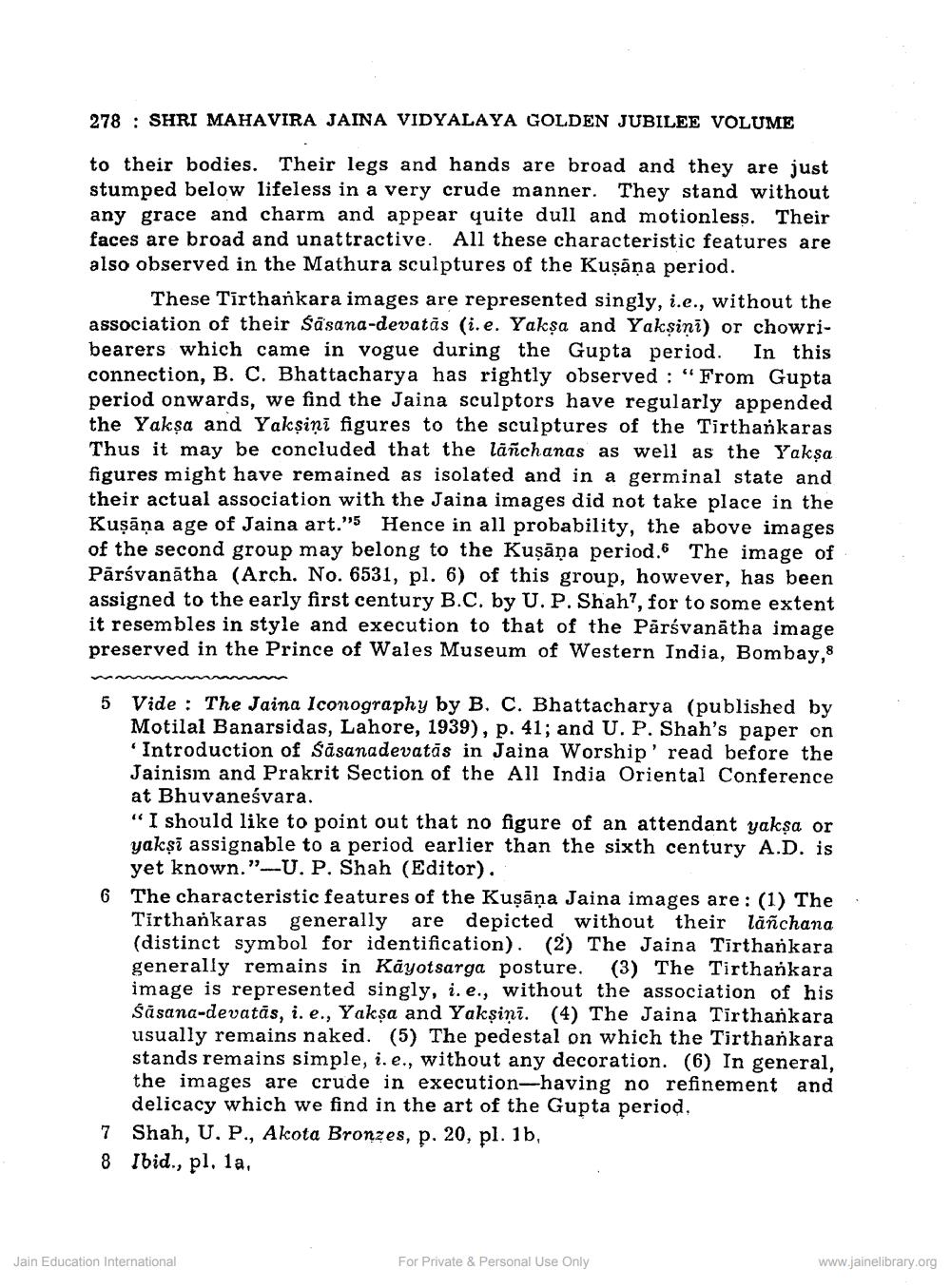Book Title: Jaina Bronzes the Patna Museum Author(s): Harikishor Prasad Publisher: Z_Mahavir_Jain_Vidyalay_Suvarna_Mahotsav_Granth_Part_1_012002.pdf and Mahavir_Jain_Vidyalay_Suvarna_ View full book textPage 4
________________ 278 : SHRI MAHAVIRA JAINA VIDYALAYA GOLDEN JUBILEE VOLUME to their bodies. Their legs and hands are broad and they are just stumped below lifeless in a very crude manner. They stand without any grace and charm and appear quite dull and motionless. Their faces are broad and unattractive. All these characteristic features are also observed in the Mathura sculptures of the Kuşāņa period. These Tirthankara images are represented singly, i.e., without the association of their Śāsana-devatās (i.e. Yakșa and Yakşini) or chowribearers which came in vogue during the Gupta period. In this connection, B. C. Bhattacharya has rightly observed : “From Gupta period onwards, we find the Jaina sculptors have regularly appended the Yakşa and Yakşiņī figures to the sculptures of the Tirthařkaras Thus it may be concluded that the lāñchanas as well as the Yakşa figures might have remained as isolated and in a germinal state and their actual association with the Jaina images did not take place in the Kuşāna age of Jaina art." Hence in all probability, the above images of the second group may belong to the Kuşāņa period. The image of Pārsvanātha (Arch. No. 6531, pl. 6) of this group, however, has been assigned to the early first century B.C. by U.P. Shah?, for to some extent it resembles in style and execution to that of the Pārsvanātha image preserved in the Prince of Wales Museum of Western India, Bombay,8 5 Vide : The Jaina Iconography by B. C. Bhattacharya (published by Motilal Banarsidas, Lahore, 1939), p. 41; and U. P. Shah's paper on Introduction of Sasanadevatās in Jaina Worship’ read before the Jainism and Prakrit Section of the All India Oriental Conference at Bhuvaneśvara. “I should like to point out that no figure of an attendant yaksa or yaksi assignable to a period earlier than the sixth century A.D. is yet known.”-U. P. Shah (Editor). 6 The characteristic features of the Kuşāņa Jaina images are: (1) The Tirthankaras generally are depicted without their lañchana (distinct symbol for identification). (2) The Jaina Tirthankara generally remains in Kayotsarga posture. (3) The Tirthankara image is represented singly, i.e., without the association of his Śäsana-devatās, i.e., Yaksa and Yakşiņi. (4) The Jaina Tirthankara usually remains naked. (5) The pedestal on which the Tirthankara stands remains simple, i.e., without any decoration. (6) In general, the images are crude in execution-having no refinement and delicacy which we find in the art of the Gupta period, 7 Shah, U. P., Akota Bronzes, p. 20, pl. 1b, 8 Ibid., pl. 1a. Jain Education International For Private & Personal Use Only www.jainelibrary.orgPage Navigation
1 2 3 4 5 6 7 8 9 10 11 12 13 14 15
